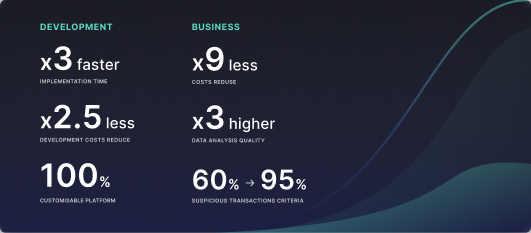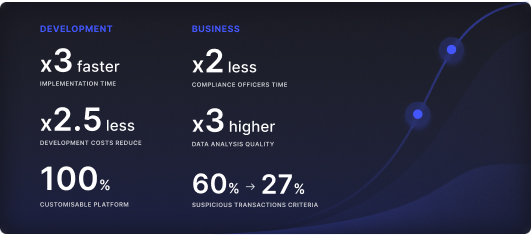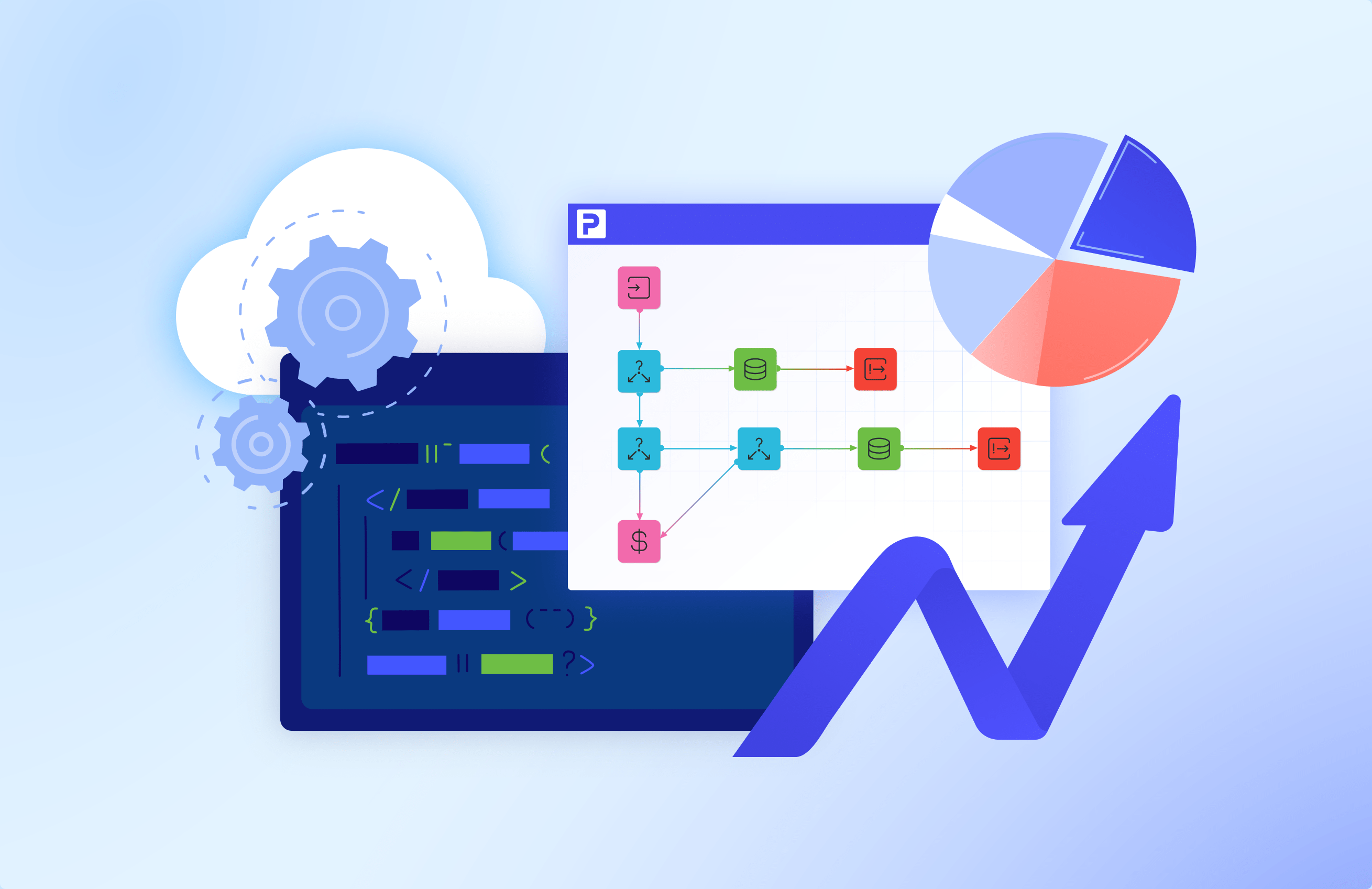Empowering professional developers: how low-code platforms increase developers’ productivity and accelerate software delivery


Do you know that heavy feeling before you start a software development project? You expect the hardships relating to the team you need to gather, upcoming expenses, deadlines to meet, and evaluating numerous risks you may face in the meantime.
As software development gets more complex low-code development platforms offer a much faster, cheaper, and efficient way to create software. On one hand, low-code platforms ease up the development process, allowing junior-middle developers to perform senior-level tasks with the same quality. On the other hand, it accelerates the process with handy developer tools and pre-made app components.
At the same time, the degree of developer empowerment boils down to the level of the low-code platform you pick. In this article, we will expand on the role of the modern low-code approach for professional software development projects. By the end of the article, you will learn:
- The challenges of the traditional software development approach;
- The actual value low-code platforms bring to professional development;
- How low-code platforms empower developers to be more effective;
- What tools you can develop with low-code platforms faster and cheaper?
Why is traditional development not your best choice anymore?
Software development projects require the efforts of a whole team of experienced developers, QA teams, and a full-stack specialist. You can understand how challenging it becomes for a project manager to orchestrate the efforts of the disjointed development team. It may lead to the following troubles:
Prolonged development timeline
The parts of a traditional development team are codependent on each other. Meaning, they work as an organism where one organ cannot function without the work of another. For instance, if a developer fails to deliver the code in time, QAs start working on it later. The situation may be complicated by the legacy tools the development teams use. later parts of software are done, and a full stack takes it to connect different parts of the app. Eventually, you face the higher risks of blacking the deadlines which can spoil the marketing campaign and inspire distrust in investors.
High development costs
As the traditional IT teams include high-profile specialists, you need to be ready to spend a bunch of money on salaries. The hourly rates of experienced developers are soaring as the demand for savvy specialists rises. Add the risks of project release postponement, the costs may become even higher.
Shrinking talent pool
To get a proper software engineer who has a narrow expertise in your domain, you might need to compete with industry leaders and tech giants like Google, Amazon, and Apple. Considering such circumstances, the hiring campaign can take a few months and does not ensure you get the right people.
Why Are Professional Developers Sceptical about Low-Code Platforms?
Most professional developers rarely understand the advantages that low code brings to the table. It makes them hesitant to adopt low-code platforms for massive development projects. They strive to understand and have a hold on how everything works under the hood.
Professional developers perceive low code as a tool for citizen developers who build quick fixes for the business and automate routine internal tasks. When professionals stumble upon low-code platforms that can auto-generate code or have other powerful features they feel skeptical. Professional developers prefer the freedom of choosing the technology, code transparency, and the ability to integrate with internal and external ecosystems. Eventually, they just don’t trust that low-code platforms can produce secure and standard-based code.
The Real Properties You Can Find in Powerful Low-code Platforms
Despite the common prejudices among professional developers in regards to low-code, there are lots of powerful low-code platforms that can offer transparency, unlimited customization, control over the source code of an app, and integrations. You would be surprised at the capacity of some of the low-code platforms to accelerate professional development and to offer full control over the app production. Below are the properties of the best-in-class low-code platforms professional developers usually oversee.
Transparent source code
Professional developers demand transparency and freedom and are averted by the proprietary codebases they associate with low-code. But in reality, low-code platforms can put their fears to rest by giving them full access to the auto-generated or pre-build code. With the powerful and open low-code platforms, professional developers can preview, change, export, import, and customize ready-made code components. In the event of an issue, a developer can get to the root of the problem and fix it, unlike closed platforms which do not give access to the error stack.
These capabilities of low-code platforms deserve to get the approval of the developer community. The flexibility of rapid app development paired with complete code control is a big advantage the open-source low-code platforms can give.
Vendor lock-in free
Vendor lock-in makes developers entirely dependent on a platform that they cannot shift to another vendor without a substantial cost, real or perceived. Breaking free from it later is a bitter and costly affair.
Many low-code platforms have no vendor lock-in and allow unlimited code customization. At the same time, some platforms provide non-editable code, some allow edits to the code but take away the freedom of deployment and some are so rigid that they border on the no-code space. So, it can take quite a while to find a low-code platform that has it all – unlimited customization capacity, multiple deployment options, and the ability to integrate with any database or 3’d party service.
Low-code platforms can provide the ability to work with code in a convenient IDE and to be able to view the code generated by a low-code platform in a Git repository. Besides, low-code platforms, like ProcessMIX, allow developers to deploy both on cloud and on-premises. To top it off, low-code platforms accelerate the integration process with pre-made connectors, and APIs, and leave space for developers to build custom integrations of their choice.
Code security
Creating secure and standard-based code is one of the primary goals of a professional developer. Trusted low-code platforms are certified by solid app security leaders, ensuring the reliability and stability of the software. In addition, low-code platforms provide automated testing of the code and make it easy to test every line of code in both static and dynamic environments.
Certified low-code platforms instill confidence in the professional developers allowing them to improve business logic, bring innovation, and enhance customer experience.
Create industry-standard quality code
Low-code generated app code follows standards-based open-source frameworks and libraries. For instance, it can substitute a full-stack developer, allowing a regular developer to work with different frameworks like React Native, Angular, ReactJS, etc. The low-code platform ensures that the platform follows the gold twelve-factor app rules. Low-code platforms that offer twelve-factor standards promise developers a supreme quality of software. It goes beyond the code but affects the entire development process and CI/CD which any professional developer would appreciate.
Moreover, the quality of code generated by low-code platforms is supported by inbuilt tools that can employ AI technology to keep the code clean and safe. The advanced low-code platforms offer code that looks and behaves as if it were written by a seasoned professional developer.
Seamless integration with the existing development ecosystem
Flexible low-code platforms will allow seamless integrations with existing testing, debugging, deployment & release pipelines such as Selenium, AppDynamics, Git, and Jenkins to name a few. Low-code tools should seamlessly integrate with the tools of these types. The low-code platform should offer a frictionless transition from a traditional development environment (Dev, QA, & DevOps have well-established processes with an ecosystem of tools).
The low-code platform must also enable easy integration with APIs, both internal and external. Once these complex APIs are imported into the platform, developers can componentize them to build compelling user experience (UI) components on top of them with low code.
What Can You Build With Low-Code App Development Platforms?
The low-code platform is great for simple implementations. However, there are a few critical types of applications that low-code app builders excel at making. They are broken down into four categories.
Innovation Apps
New technologies like AI (Artificial Intelligence), IoT (Internet of Things), and blockchain, are exciting fields to try out. Here, low-code apps can bring these technologies to business users and make their work easier.
Migration Apps
Migration apps are low-code apps that are designed to port and move data and users from a legacy system to a newer, cloud-based system. Data can move seamlessly across apps without the need for humans to get involved.
Operational Efficiency Apps
These are the most common low-code solutions and utilities designed to make work easier for business users. It’s also where workflow and process improvement apps fall into place since they automate manual processes and ensure higher accuracy of processed data.
Customer Engagement Apps
Customer engagement apps are used to improve the experience the customer has with the product or organization. They can be UI frameworks, widgets, and more. Since these are meant to be customer-visible, you can visually change app designs and colors to match your organization.
Summary
For professional developers, low-code platforms are a panacea to the latency woes of traditional development. We can conclude that a standards-based and secure low-code platform is a better alternative to traditional development, in that it can create apps of the same if not better quality in about half the time. A low-code developer can wear multiple hats serving as a front-end developer, back-end engineer, and DevOps engineer— all rolled into one, thus reducing the dependency on multiple skill sets. With an open low-code platform, leaner teams can build applications at a faster pace.
Professional developers should shed their narrow vision of looking at low-code platforms as quick-fix tools for immediate problems. With a long-term strategy built around the right kind of low-code platform, professional developers and IT teams can imbibe the best practices of traditional development methodologies and create modern experiences cheaper and faster. Eventually, the best way to grasp all the power of advanced low-code platforms.
Try ProcessMIX to Empower your Developers
ProcessMIX is a converged platform created by professional developers for professional developers. It unites the low-code back-end software builder with middleware capabilities.
As a low-code tool, ProcessMIX offers a set of pre-build code components that you can freely change to fit your project requirements. The visual development tool, in turn, allows developers to build the basic structure of software faster and focus more on user experience and functional parts. At the same time, ProcessMIX is embedded with an array of productivity tools for code testing, seamless integration, and accelerated CI/CD processes.

As a middleware, the platform makes it easy to integrate the application with your existing systems and development environments. Integrating a ProcessMIX back-end with another web/mobile app, 3’d party service, or existing digital system, can take a few minutes.
This unique combination of functionalities allows professional developers to build fully customized back-end solutions for different industries at short notice with no hassle. Get a free ProcessMIX Demo and see the benefits of the low-code platform for professional development for yourself.
For more information on the ProcessMIX features and the user flow, check ProcessMIX documentation or a Quick Start guide to start developing right away.
 Visual Development
Visual Development Assignment of risk level and customer category within KYC processes during customer onboarding
Assignment of risk level and customer category within KYC processes during customer onboarding Cross-sell offer calculation for a 12MM strong client portfolio
Cross-sell offer calculation for a 12MM strong client portfolio

